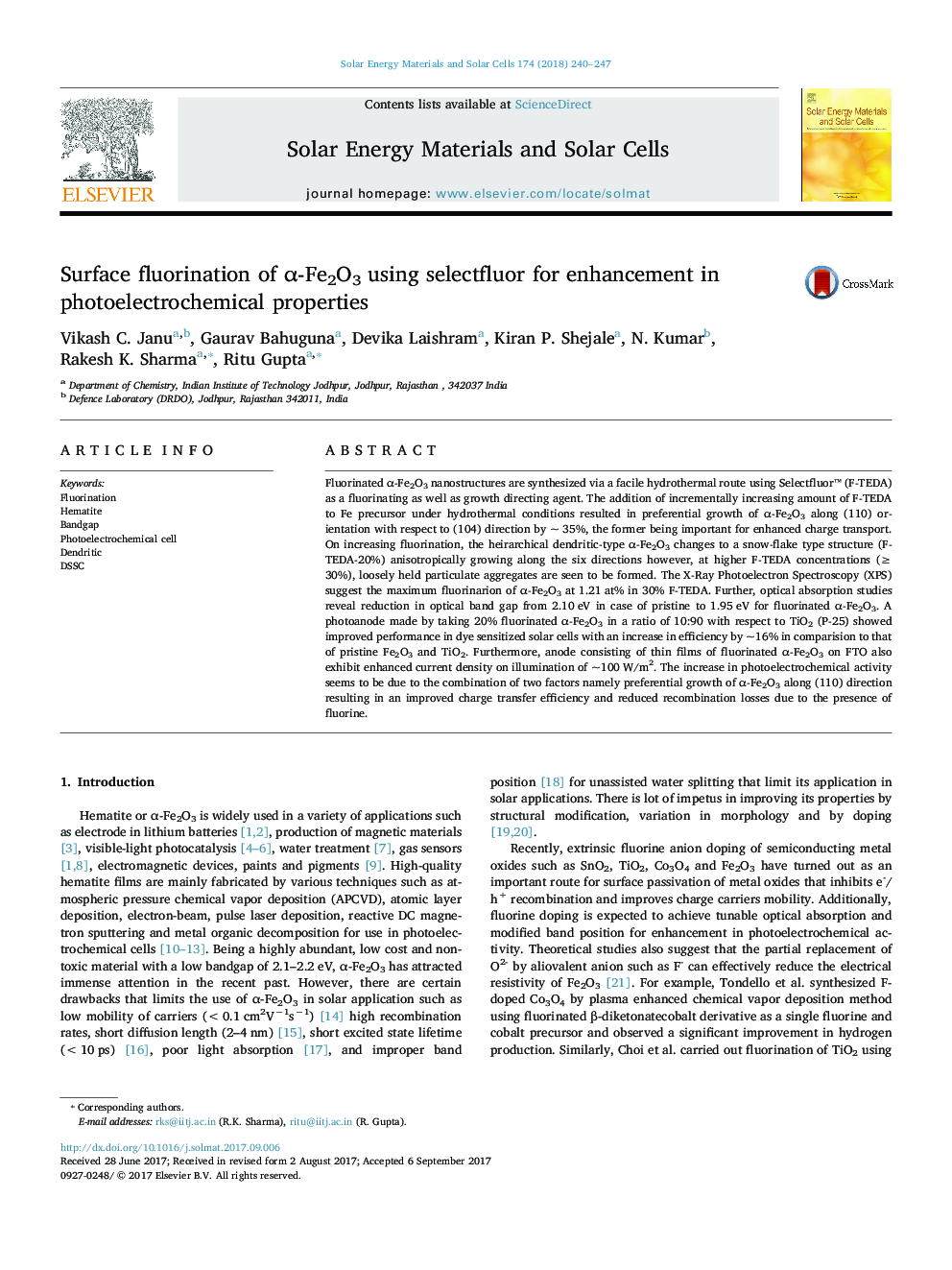| Article ID | Journal | Published Year | Pages | File Type |
|---|---|---|---|---|
| 6456667 | Solar Energy Materials and Solar Cells | 2018 | 8 Pages |
â¢Fluorination of Fe2O3 is carried out by using Selectfluor (F-TEDA) as an electrophilic source of fluorine.â¢F-TEDA acts as fluorinating as well as shape directing agent for growth of Fe2O3 resulting in an increase in 110 orientation.â¢A detailed XPS study is performed to estimate the fluorine present on the surface.â¢F-Fe2O3 exhibits a systematic decrease in band gap and increase in their photoelectrochemical properties.
Fluorinated α-Fe2O3 nanostructures are synthesized via a facile hydrothermal route using Selectfluor⢠(F-TEDA) as a fluorinating as well as growth directing agent. The addition of incrementally increasing amount of F-TEDA to Fe precursor under hydrothermal conditions resulted in preferential growth of α-Fe2O3 along (110) orientation with respect to (104) direction by ~ 35%, the former being important for enhanced charge transport. On increasing fluorination, the heirarchical dendritic-type α-Fe2O3 changes to a snow-flake type structure (F-TEDA-20%) anisotropically growing along the six directions however, at higher F-TEDA concentrations (⥠30%), loosely held particulate aggregates are seen to be formed. The X-Ray Photoelectron Spectroscopy (XPS) suggest the maximum fluorinarion of α-Fe2O3 at 1.21 at% in 30% F-TEDA. Further, optical absorption studies reveal reduction in optical band gap from 2.10 eV in case of pristine to 1.95 eV for fluorinated α-Fe2O3. A photoanode made by taking 20% fluorinated α-Fe2O3 in a ratio of 10:90 with respect to TiO2 (P-25) showed improved performance in dye sensitized solar cells with an increase in efficiency by ~16% in comparision to that of pristine Fe2O3 and TiO2. Furthermore, anode consisting of thin films of fluorinated α-Fe2O3 on FTO also exhibit enhanced current density on illumination of ~100 W/m2. The increase in photoelectrochemical activity seems to be due to the combination of two factors namely preferential growth of α-Fe2O3 along (110) direction resulting in an improved charge transfer efficiency and reduced recombination losses due to the presence of fluorine.
Graphical abstractDownload high-res image (217KB)Download full-size image
